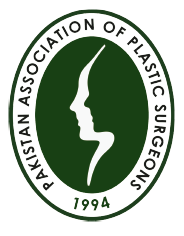
prp (platelet rich plasma)
PRP is procedure in which patient’s blood is processed to make platelets rich plasma that is then injected locally into patient to treat different problems.
PRP injections are prepared by drawing blood from the patient’s vein, transferred into few tubes with an anticoagulant and then sample is spin to centrifuge.by centrifuging red cells are separated from blood and it concentrate the platelets. These activated platelets are then injected directly into patients injured or diseased body tissue. This releases growth factors that stimulate and increase the number of reparative cells your body produces.
Patients with hair fall or having decrease hair density can benefit from PRP injections. It is effective in treating androgenic alopecia (male pattern baldness). Patient’s blood is drawn, processed and then injected into the areas of scalp that have decrease hair growth .PRP accelerate the hair growth by activating hair follicles. Procedure needs local anesthesia and multiple sessions are needed to get desired results. PRP can be use post hair transplant.
PRP is commonly used to treat skin aging .It helps in reducing fine lines and wrinkles by stimulating collagen production and cell migration. Thus it improves skin quality giving a young looking face. Multiple sessions are required to give skin a better texture and tone.
PRP can improve the quality of atrophic, depressed acne scars either alone or along with its treatment with ablative fractional CO2 laser. It decrease the duration of laser-related side effects including edema and erythema. Regarding surgical scars, PRP may improve wound healing and early scar quality, texture, color and contour in scar resurfacing.
Chronic wounds are characterized by a prolonged inflammatory phase, involving a continuous destruction of matrix proteins and growth factors. PRP stimulates the body to row new and healthy cells. It is rich in growth factor and growth factors promote cell migration, proliferation, and differentiation, which are essential for wound healing. Role of PRP in chronic leg ulcers have been established.
The best candidates are people who have only recently begun to lose hair. PRP won’t work for anyone who’s completely bald and it won’t completely regrow all lost hair.
Mostly 6 -12 months
PRP is extracted from patient’s own blood so it can not cause allergic reaction.
There is not a single answer to this question. Number of sessions depends on area involved in case of hair restoration. In treating scars or wounds it depends on severity and chronicity of wound or scar.
Patients with following problems should not undergo PRP therapy
- Severe anemia
- Low platelet count
- Abnormal platelet function
- Active systemic infection
- Patients on blood thinners
Local anesthesia is either locally applied or injected to reduce pain.


